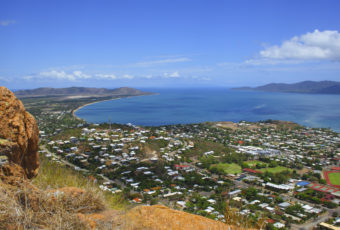JCU team rate cyclone protection barrier
James Cook University researchers have discovered just how much protection locally available plywood provides against cyclone debris.
The low-cost timber is commonly secured to window frames by nailing or other fastening methods in order to protect glass in a storm.

Now JCU’s Nimesh Fernando and Ben Vincent, using the university’s wind-borne debris generator at its Cyclone Testing Station, have established exactly how much a plywood barrier can take.
The pair bought 17mm-thick standard plywood from a hardware chain and fired 4kg blocks of wood at it with increasing speeds.
“It will resist debris typically produced by a category two cyclone,” said Mr Fernando. “Based on experimentation, we wouldn’t recommend local plywood for anything above that.”
The pair found standard plywood was pierced by the wood block projectile at any speed over 14 metres per second—around 50 kmh.
“Based on Australian Standards, it would take a wind speed of 120 or 130 kmh, which is typical for a category two storm, to pick up such an object and project it at 50kmh,” said Mr Fernando.
He said heavier plywood would provide more protection. “We didn’t specifically model or test it, but we anticipate that a higher grade marine plywood should protect from debris produced by a low category three storm.”
The James Cook University researchers used 17mm thick plywood with a strength rating of F11 in their experiments. Buyers can see the standard ‘f-grade’ rating marked on the wood sold in hardware stores. “The greater the F-number, the better,” said Mr Fernando.
He said the most important outcome of the experiment was progress in corroborating the physical results with a computer model which could be used to evaluate other plywood and projectiles.
“We validated the simulations with newly acquired physical test data. There are some improvements to be made, but we have created the platform for future impact testing of debris shields.
“To simulate realistic damage characteristics of plywood was a great achievement.
“The benefit of the numerical method developed as part of this project is its capacity to test different species, thickness and sizes of plywood for any projectile by modelling, rather than having to repeat the expensive and time consuming physical testing.”
Mr Fernando said almost any protection was better than none. “Even in the cases where the projectile passed through the plywood it had lost 80 percent of its velocity by the time it reached the other side.”
*

































Ask A Question
Ask us about your program of interest, or if you have a question about our services.
CONTACT US TODAY